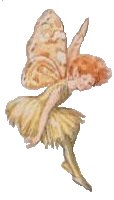|
MARGARET TARRANT (1888-1959)
Margaret Tarrant was a prolific illustrator. During her
fifty-year career, she created posters, greeting cards,
calendars, postcards and book as well as oil paintings. She
was most popular during the 1920’s and 1930’s and was known
for her romantic depiction of children, fairies and animals.
Tarrant was born in Battersea, a suburb of south London
in 1888. She was the only child of Percy Tarrant, the
landscape painter, and his wife, Sarah Wyatt.
Percy was a successful illustrator of magazines as well
as books and greeting cards. His work was very influential
in her life and he her encouraged her to take up
illustration. As a child, Tarrant would set up an
‘Exhibition Tent’ with sheets, pin up her art work and
invite her parents inside for viewing.
Margaret's first training was in the art department of
Clapham High School, where she won several awards for
drawing. After graduating, she attended Clapham School of
Art. She briefly trained as a teacher, but instead, became
interested in watercolor painting and illustrating.
Tarrant began to work for publishers of Christmas cards
at the age of eighteen and became a book illustrator at the
age of twenty with the publication of Kingsley’s The Water
Babies in 1908. The next year, she produced a series of
paintings for postcards, published by C.W. Faulkner.
In 1910 she illustrated both Fairy Stories from
Hans Christian Andersen and Charles Perrault's Contes.
She exhibited at the Royal Academy and the Walker Royal
Society of Artists.
After working for some time as an illustrator, she left
work in 1918 to study at Heatherley’s School of Art, in
London where she stayed until 1923. In 1935, she furthered
her art education at Guildford School of Art where she
became a life-long friend of fellow fairy artist, Molly
Brent. She was also a good friend to fairy artist, Cecily
Mary Barker.
 During
her long career, she worked for many publishers. In later
years, she worked almost exclusively with the Medici
Society. For them, she collaborated with Marion St John Webb
on a popular series of Flower Fairy books in the 1920’s. Her
color illustrations accompanied Webb's poems about unusual
fairies such as insects and wild fruits. Altogether 13
little books, about 10 by 13 cm. (4 by 5 inches), were
produced from 1917 to 1929. During
her long career, she worked for many publishers. In later
years, she worked almost exclusively with the Medici
Society. For them, she collaborated with Marion St John Webb
on a popular series of Flower Fairy books in the 1920’s. Her
color illustrations accompanied Webb's poems about unusual
fairies such as insects and wild fruits. Altogether 13
little books, about 10 by 13 cm. (4 by 5 inches), were
produced from 1917 to 1929.
During the 1920's and early 1930's, her religious
paintings were very fashionable. The best known was The
Prayeth Best which depicted a shepherd boy kneeling on a
hilltop. In an effort to collect material for her work, the
Medici Society sent her on a trip to Palestine in 1936.
Her most popular painting was called The Piper of
Dreams.
By 1953, her health and eyesight were deteriorating.
Within a few years, she gave up her house in Peaslake to
live with her friend Molly Brett in Cornwall. She died on
July 28,1959. She left her pictures to her friends and her
estate to twelve charities.
|